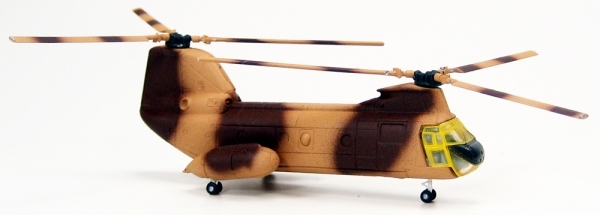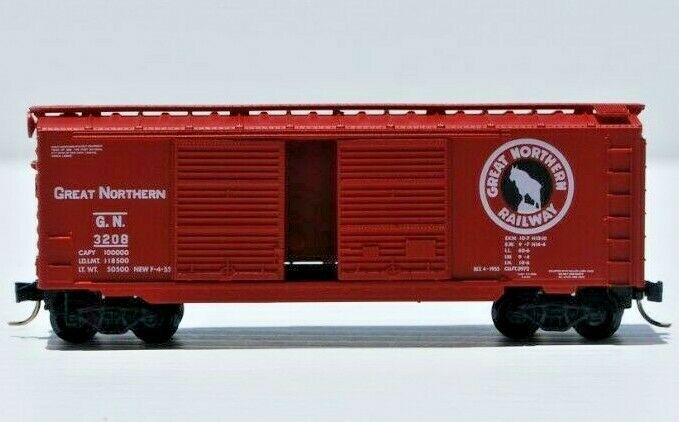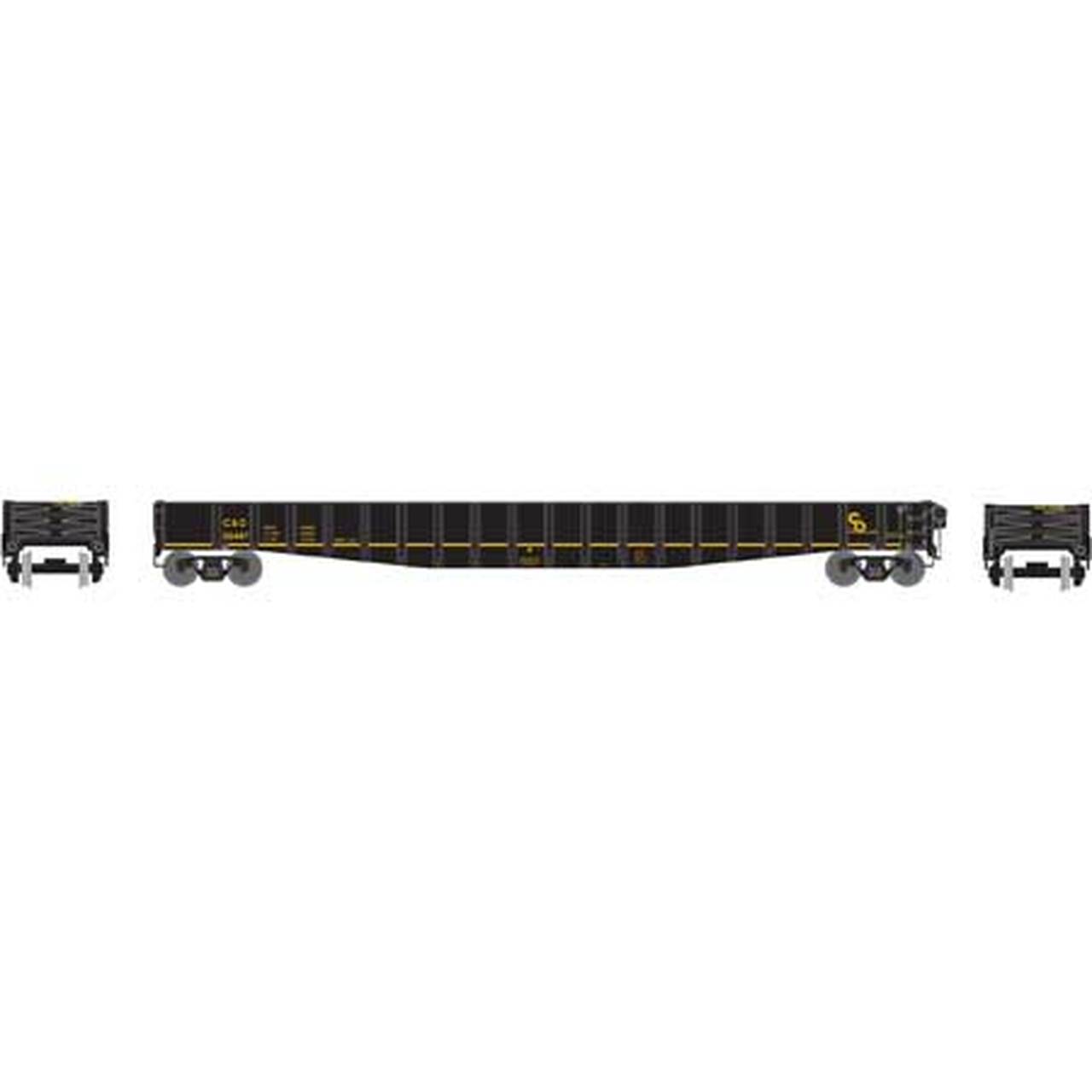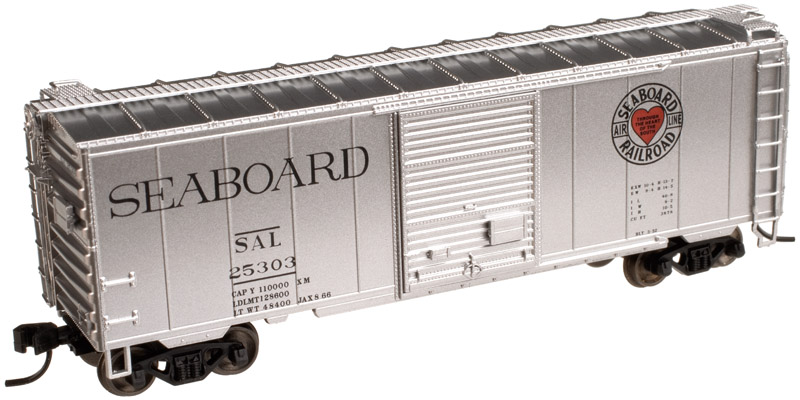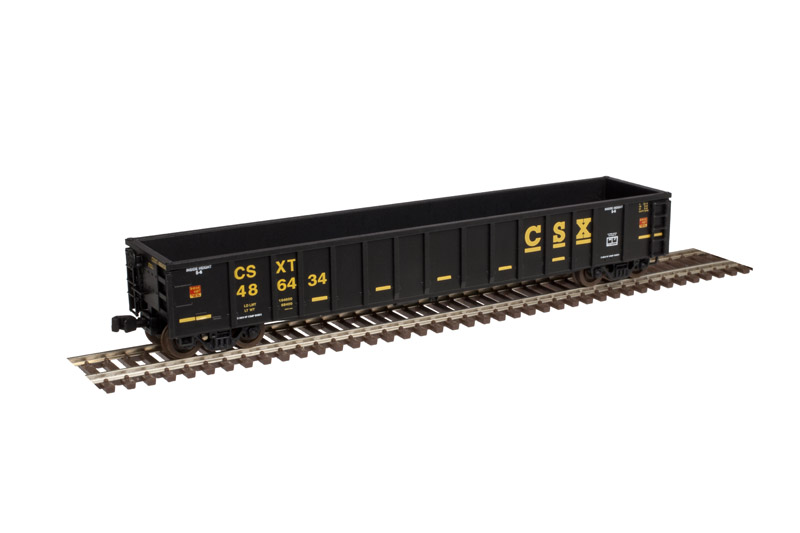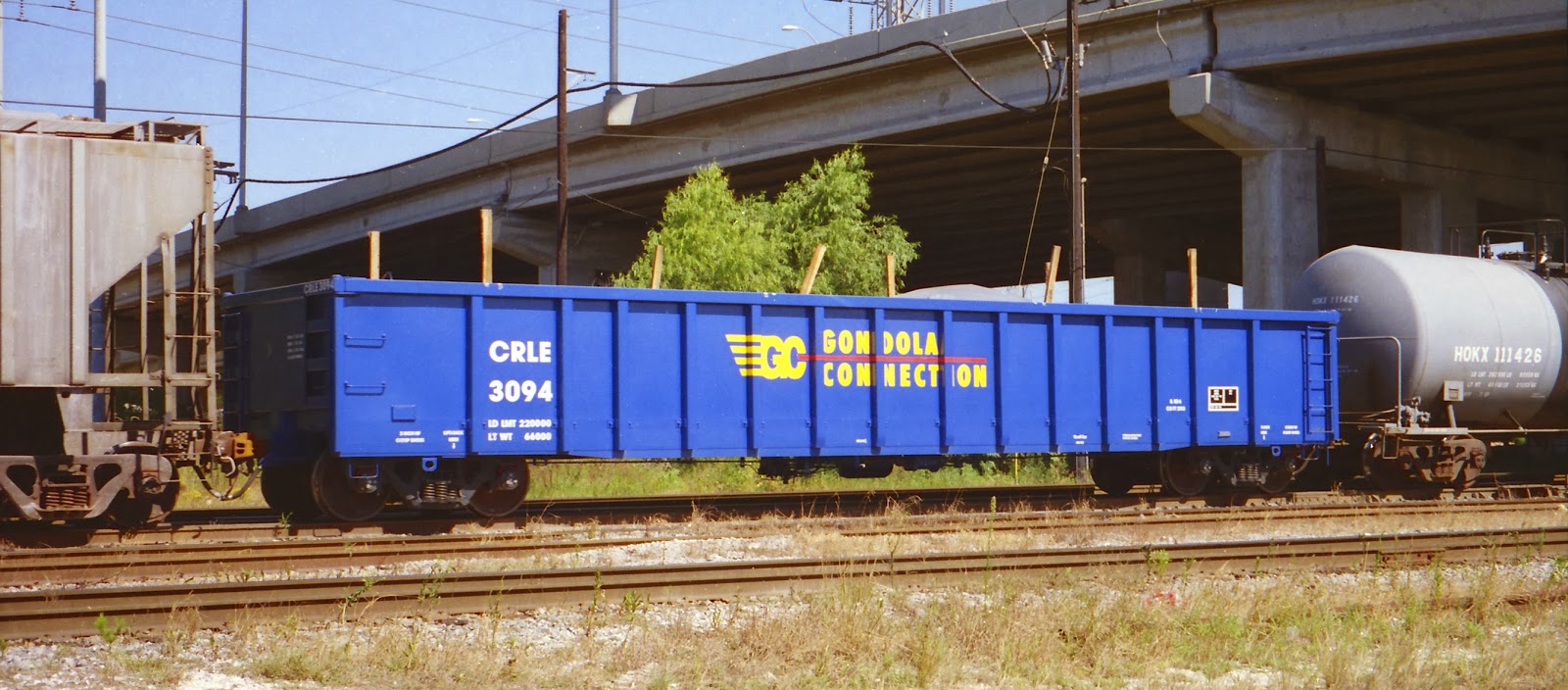Model Information: This model was announced in December of 2008 and first released in May of 2009. It is comparable in quality to the Micro-Trains fix-end 50 foot gondolas in quality of construction and model features. The features include: Prototypical scale height reflecting the new higher capacities standard; Fourteen side posts; Separate ladders; Detailed stirrups; Accurate painting and lettering. Of particular interest are the detailed ladders and stirrups which are more typical of a 3rd generation model. The truck-mounted couplers and plastic wheels, however, squarely put this model in the 2nd generation zone.
Prototype History: Introduced by Thrall Car Manufacturing Co., in 1995, with its new interior height of 5' 6" (i.e., a 6" increase in height over the previous standard), the firm's contemporary design for a 52' 6" length 2743 cubic foot capacity gondola car took advantage of a (then) newly allowed increase in Gross Rail Loading (GRL) of 286,000 lbs, which was up from the previous limit of 263,000 lbs.
Acquired by Trinity Industries (now TrinityRail) in 2001, from 1995 to 1999, Thrall produced over 6,700 of the 2743 gondolas.
The manufacture of the 2743 design was resumed by Trinity in 2005.
Acquired by Trinity Industries (now TrinityRail) in 2001, from 1995 to 1999, Thrall produced over 6,700 of the 2743 gondolas.
The manufacture of the 2743 design was resumed by Trinity in 2005.
Road Name History: 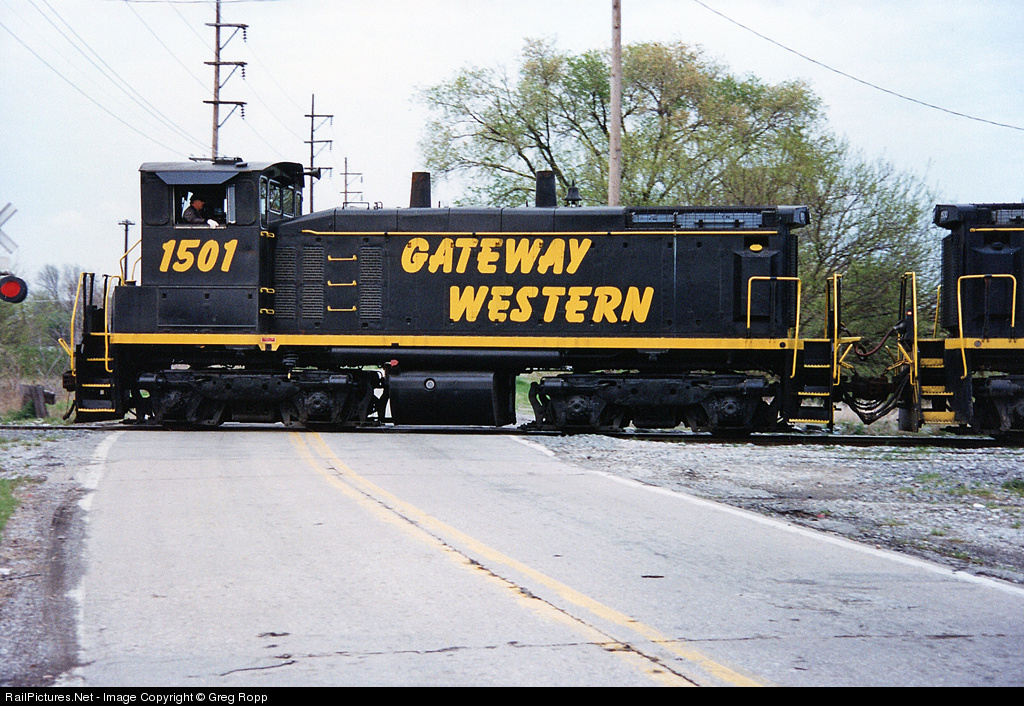 Gateway Western began operations in 1990 in the aftermath of the collapse of Chicago Missouri & Western. Southern Pacific took CM&W’s St. Louis to Chicago mainline. Gateway Western took the line from Springfield, Illinois to Kansas City with branches including a route to East St. Louis. Total mileage was 408.
Gateway Western began operations in 1990 in the aftermath of the collapse of Chicago Missouri & Western. Southern Pacific took CM&W’s St. Louis to Chicago mainline. Gateway Western took the line from Springfield, Illinois to Kansas City with branches including a route to East St. Louis. Total mileage was 408.
Santa Fe enthusiastically supported the private equity firm that launched GWWR because they wanted a friendly and independent connection from their line in Kansas City to the St. Louis area. Santa Fe funneled a substantial amount of traffic including intermodal traffic onto the Gateway Western. In addition, GWWR generated some farm product and chemical traffic of its own.
Gateway Western’s diesel fleet was 38 units strong including 28 GP38’s, 4 GP40’s, and 6 SW1500’s. The units were painted black and yellow, in a scheme that is very similar to Nickel Plate’s final diesel scheme with the addition of silver trucks on the road switchers. This is not due to any historic connection with the Nickel Plate. This route’s heritage is: Chicago & Alton to Alton Railroad to Gulf Mobile & Ohio to Illinois Central Gulf to Chicago Missouri & Western to Gateway Western.
After the merger of Burlington Northern and Santa Fe, the St. Louis traffic that had gone to Gateway Western was shifted to former BN routes. So, in 1997 the Gateway Western and their terminal road subsidiary Gateway Eastern were purchased by Kansas City Southern. For the next four years, Gateway Western was run as a wholly owned subsidiary of KCS. In 2001, the GWWR was completely merged into KCS, lowering the flag after 11 years.

Santa Fe enthusiastically supported the private equity firm that launched GWWR because they wanted a friendly and independent connection from their line in Kansas City to the St. Louis area. Santa Fe funneled a substantial amount of traffic including intermodal traffic onto the Gateway Western. In addition, GWWR generated some farm product and chemical traffic of its own.
Gateway Western’s diesel fleet was 38 units strong including 28 GP38’s, 4 GP40’s, and 6 SW1500’s. The units were painted black and yellow, in a scheme that is very similar to Nickel Plate’s final diesel scheme with the addition of silver trucks on the road switchers. This is not due to any historic connection with the Nickel Plate. This route’s heritage is: Chicago & Alton to Alton Railroad to Gulf Mobile & Ohio to Illinois Central Gulf to Chicago Missouri & Western to Gateway Western.
After the merger of Burlington Northern and Santa Fe, the St. Louis traffic that had gone to Gateway Western was shifted to former BN routes. So, in 1997 the Gateway Western and their terminal road subsidiary Gateway Eastern were purchased by Kansas City Southern. For the next four years, Gateway Western was run as a wholly owned subsidiary of KCS. In 2001, the GWWR was completely merged into KCS, lowering the flag after 11 years.
Brand/Importer Information: In 1924 Stephan Schaffan, Sr. founded the Atlas Tool Company in Newark, New Jersey. In 1933 his son, Stephan Schaffan, Jr., came to work for his father at the age of sixteen. Steve Jr. built model airplanes as a hobby and frequented a local hobby shop. Being an enterprising young man, he would often ask the owner if there was anything he could do to earn some extra spending money. Tired of listening to his requests, the hobby-store owner threw some model railroad track parts his way and said, "Here, see if you can improve on this".
In those days, railroad modelers had to assemble and build everything from scratch. Steve Jr. created a "switch kit" which sold so well, that the entire family worked on them in the basement at night, while doing business as usual in the machine shop during the day.
Subsequently, Steve Jr. engineered the stapling of rail to fiber track, along with inventing the first practical rail joiner and pre-assembled turnouts and flexible track. All of these products, and more, helped to popularize model railroading and assisted in the creation of a mass-market hobby. The budding entrepreneur quickly outgrew the limitations of a basement and small garage operation. Realizing they could actually make a living selling track and related products, Steve and his father had the first factory built in Hillside, New Jersey at 413 Florence Avenue in 1947. On September 30, 1949, the Atlas Tool Company was officially incorporated as a New Jersey company.
In 1985, Steve was honored posthumously for his inventions by the Model Railroad Industry Association and was inducted into the Model Railroad Industry Hall of Fame in Baltimore, Maryland. In addition, Steve was nominated and entered into the National Model Railroad Association Pioneers of Model Railroading in 1995.
In the early 1990s, the Atlas Tool Company changed its name to Atlas Model Railroad Company, Inc.
In those days, railroad modelers had to assemble and build everything from scratch. Steve Jr. created a "switch kit" which sold so well, that the entire family worked on them in the basement at night, while doing business as usual in the machine shop during the day.
Subsequently, Steve Jr. engineered the stapling of rail to fiber track, along with inventing the first practical rail joiner and pre-assembled turnouts and flexible track. All of these products, and more, helped to popularize model railroading and assisted in the creation of a mass-market hobby. The budding entrepreneur quickly outgrew the limitations of a basement and small garage operation. Realizing they could actually make a living selling track and related products, Steve and his father had the first factory built in Hillside, New Jersey at 413 Florence Avenue in 1947. On September 30, 1949, the Atlas Tool Company was officially incorporated as a New Jersey company.
In 1985, Steve was honored posthumously for his inventions by the Model Railroad Industry Association and was inducted into the Model Railroad Industry Hall of Fame in Baltimore, Maryland. In addition, Steve was nominated and entered into the National Model Railroad Association Pioneers of Model Railroading in 1995.
In the early 1990s, the Atlas Tool Company changed its name to Atlas Model Railroad Company, Inc.
Item created by: Steve German on 2016-04-16 12:09:49. Last edited by Alain LM on 2020-06-17 02:00:18
If you see errors or missing data in this entry, please feel free to log in and edit it. Anyone with a Gmail account can log in instantly.
If you see errors or missing data in this entry, please feel free to log in and edit it. Anyone with a Gmail account can log in instantly.





